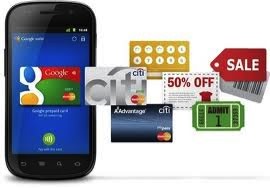
What is a Mobile Wallet…and why should you care?
Before explaining the five different types of Mobile Wallets in the marketplace, it makes sense to first ground ourselves in what we mean by this term. After all, in the past year this term has grown wildly in popularity, and is used to describe a whole host of different concepts. We think that, at its core, a Mobile Wallet is any application that enables individuals to store their credit/debit cards and banking information on their mobile device, and use that device to make retail purchases or other online payments. Mobile wallets are also known as virtual wallets or digital wallets, and there are various providers all competing for widespread market acceptance, among them traditional credit card processors, online payment solutions, brick-and-mortar retailers, and even telephone network carriers. Typically, Mobile Wallet solutions facilitate in-store payments only or BOTH in-store AND online transactions. While the approaches of the providers vary, their end goals are all the same: to make brick-and-mortar retail payments as easy as holding up your mobile device at the Point of Sale (POS) in stores, eliminating the need for customers to carry their physical wallets, while capturing user behavior and customer information that can be used to drive future sales.
The potential global market for mobile transactions is large and rapidly expanding. Gartner projects the global mobile transaction volume to average 42 percent annual growth through 2016, leading to a market worth $617 billion and 448 million user. Furthermore, Gartner estimates that 1.2 billion smartphones and tablets will be bought worldwide in 2013. According to Statista, there are over 5 billion active mobile devices while only 1.3 billion active credit or debit accounts worldwide offering payment providers potentially a large new market. Some industry leaders predict that Mobile Wallets will be as disruptive to credit/debit card processing as ATMs where to the financial services industry.
More than a “Credit Card” – it’s really a wallet (or at least it’s trying to be)
Additionally, Mobile Wallet functionality extends beyond facilitating payments and transactions. For individual users, Mobile Wallet features vary, but most offer some range of non-transaction-based functionalities, among them:
Displaying store coupons and discount offers at participating businesses
Identifying location specific or real-time offers or discounts
Providing search directories and ratings of near-by restaurants and shops
Organizing credit and debit cards and receipts
For retailers and consumer products companies, Mobile Wallets provide a compelling opportunity to market to customers directly. Each consumer is unique, with individualistic shopping habits and expectations. Mobile Wallets enable merchants and brands to provide real time customized and targeted marketing to their customers through mobile devices. While this is great news for the retail industry, there is a wide array of Mobile Wallet solutions in the marketplace, with no clear market leader. As each of those solutions use different approaches to solve the problem and provide different feature sets, retailers and their vendors need to weight these factors carefully when deciding which approach to adopt.
The Payment Industry and the Mobile Wallet Landscape
According to the Nilson Report, last year $6.7 trillion was channeled through credit card networks such as Visa, MasterCard, and American Express ($15 trillion when including debit cards/pre-paid cards). Competing firms and industries want to take a slice of this huge market via the mobile revolution by transforming the way consumers make payments – from plastic cards to mobile devices. However, due to complicated regulations and specialized payment and anti-fraud systems, it is not easy for scrappy start-ups or new market entrants to provide valid mobile purchasing options without help from the veterans in the payment industry (see figure 1 below for an overview of the relationship network surrounding the Mobile Wallet).
Moreover, the veterans in the payment-processing world are not content with just collaborating with emerging technology companies for mobile payment dollars. They are also creating their own applications and services attempting to retain market share. For example, Visa has launched V.me, which accepts not only Visa cards, but also other credit cards. Master Card is also developing its own virtual wallet solution that enables multiple payment options.
Over the next few years, winners will emerge and preferred strategies will begin to define the mobile payment industry. In the meantime, retailers and consumer products companies need to decide whether to act, wait, or worry about being left behind. If you are embarking on an effort to grow sales and gain customer intelligence through mobile payments, how do you decide what solutions to include in your go-forward strategy? While it is too soon to identify winners, there are mobile trends that anyone can use to guide implementation options. Below we will look at five current strategic approaches to the Mobile Wallet opportunity.
The Five Mobile Wallet Strategies
1. “Tap and Go” Mobile Wallets: “Tap and go” mobile wallets enable individuals to use their phones at the point of sale to make payments. “Tap and Go” mobile phones rely on NFC (Near Field Communication) technology built into the device in conjunction with a NFC equipped POS system. NFC technology is a contactless technology built to transmit within a short range. Currently, Android devices are deployed with NFC technology, but Apple has chosen to pursue another avenue due to concerns about the open-source technology and the overall NFC market potential.
Google Wallet is the dominant player in the “Tap and Go” Mobile Wallet category. Google Wallet allows customers to store and access multiple credit cards as well as bank account information and make payments in-store (i.e., “tap and go”). Additionally, consumers can purchase items at eCommerce sites authorized to accept Google Wallet payments. Finally, Google Offers and other consumer-friendly features are automatically synced to customer’s phones; which combines the convenience and flexibility of using one mobile wallet solution for in-store and online transactions.
Adding Google Wallet as a payment option on retailer’s ecommerce sites is straightforward using standard APIs with limited change to existing back-end systems and arrangements with their credit card payment processor. For in-store transactions, however, all merchants will need to install and maintain a NFC reader. Most industry analysts believe that Android devices will continue to increase global market share, positioning Google Wallet as a leading contender in the mobile payment sweepstakes.
Other providers less well-known providers offering NFC “Tap and Go” products and services include MasterCard PayPass and ISIS.
2. “Scan the Bar Code on Your Phone”: This approach requires users to download an application to their phone, add or link credit cards, and allow merchants the option of scanning the bar code that appears in the application or slide a bar code for a specific over the read on the application.
Square Wallet is the leading proponent of this approach. Moreover, Apple promotes Square Wallet as part of its Passbook suite of suggested applications. Consumers can also enter loyalty cards and gift cards to their account. With Square Wallet, you can also easily send gift cards to friends and family. This approach is strictly a POS-based solution and cannot be used for online shopping due to its reliance on bar code scanning technology to facilitate transactions.
Set-up is simple and straightforward for retailers. For example, merchants can use Square Register on their iPad instead of a cash register, and the built-in accompanying set of analytics makes tracking sales and identifing consumer trends and behaviors easy. Also, once you sign-up for for Square Register you receive a free card reader.
Other solution providers in this category include LevelUp and DigiMo. They offer slightly different feature sets for specific audiences, but the overarching approach is the same.
3. PayPal: PayPal is the market leader in alternative online payment services. According to a comSource report 48% of survey respondents said that they have used PayPal. PayPal’s 2012 annual revenue was $5.6B and it accounted for 40% eBay’s revenues. PayPal started out as an alternative to using credit cards to make online payments and has evolved into the mobile wallet market. PayPal enables users to make payments for their in-store purchases at participating businesses by simply entering their phone number or swiping their PayPal Card. Store coupons and other discounts are automatically applied.
Setting up PayPal online requires copying provided html codes to your online checkout solution, and merchants have the option to accept in-store payments at their terminal or on mobile devices. In addition, PayPal provides a free card reader when you sign up for a business account. While PalPay current dominates the non-credit card online market, it is uncertain if they will extend that dominance to mobile payments.
4. Direct Mobile Billing: With this process, a consumer buys a product and charges the expense to their cell phone bill directly. The most common current examples are buying digital products, such as ring tones or applications, or making charitable donations and paying for the item via your network carrier on your cell phone bill.
Direct mobile billing service providers are promoting the ease of using this method of payment since all that is required is a cell phone number. However, this option is currently only available for online transactions. For on-line retailers, merchants, it is also fairly easy and quick to integrate their existing eCommerce platforms with common direct mobile providers. PayOne, for example, claims implementation can occur within 24 hours). Network carriers are pushing this option particularly hard, as they have much to gain from the Direct Mobile Billing approach.
Providers in this category include PayOne and Zong.
5. Closed Loop Mobile Payment – With this approach, merchants build and maintain their own mobile wallet. Walmart, currenty 11% of US retail sales, and other large retailers such as Starbucks and Target are developing their own payment processing solutions. The advantage to a retailer is potentially avoiding credit card processing fees while gaining additional insight into consumer behavior and increasing the ability to target specific deals at a customer level by leveraging proprietary data gathered by their own, wholly-owned payment systems. For example, once a Starbucks consumer downloads the Starbucks application they can enable mobile payment via PayPal, bank transactions, or traditional credit cards. Customer can use the Starbucks application on their phone to make payments and for other loyalty reward programs. According to a Mobile Payment Today report, the company added 1.4million members in Q1 of FY2013. While this strategy appeals to large retailer providers with loyal customers, it is uncertain if consumers will adopt retail-driven payment solutions that lock them into one retailor, or if credit card payment and processing providers will relinquish their role and margins facilitating plastic transactions.
Conclusion: What does this mean to me?
While Mobile Wallet solutions have the potential of being the next big payment alternative, standardization in the mobile industry needs to occur to usher in mass adoption. With numerous digital wallets options available and no clear leader, retailers are uncertain on what approach to pursue and customers are confused on what option is best for them. Moreover, based on a recent study conducted by comSource, only 51 percent of the responding consumers have ever heard of a digital payment service other than PayPal and only 12 percent of consumers have ever used one. Mobile payments are clearly still an emerging capability. However, adoption is rapidly increasing, and it is time to begin thinking about your Mobile Wallet strategy, and, perhaps it is even time to start fully defining it. Like ATMs, debit cards, and ecommerce shopping before them, Mobile Wallets are coming and they will redefine the retail experience. Those who avoid this reality risk being overcome by events rather than shaping them.
This blog was co-authored by Management Consultants, Kevin Erickson and Mary Singh. For additional information or assistance, please contact us.
Contact Us
Ready to achieve your vision? We're here to help.
We'd love to start a conversation. Fill out the form and we'll connect you with the right person.
Searching for a new career?
View job openings